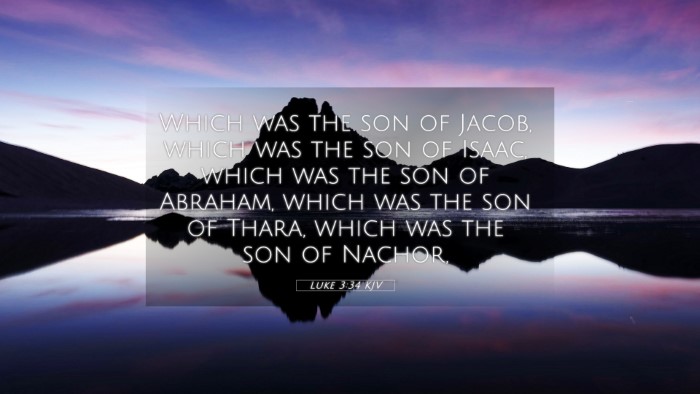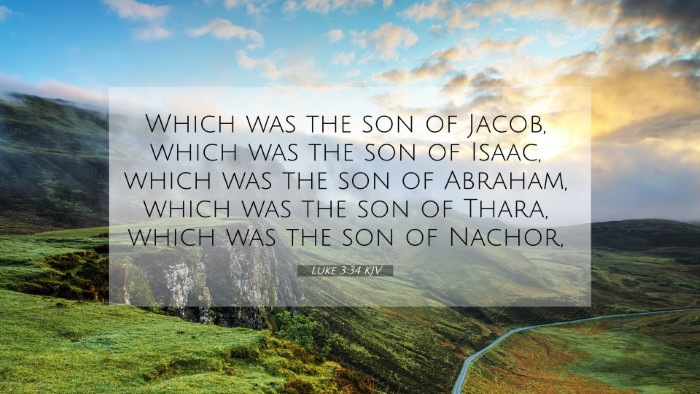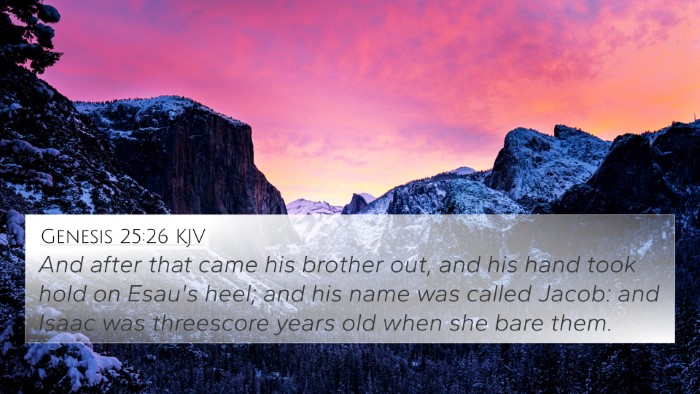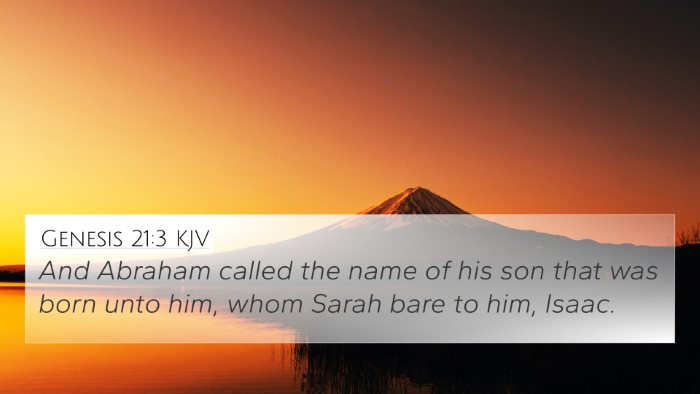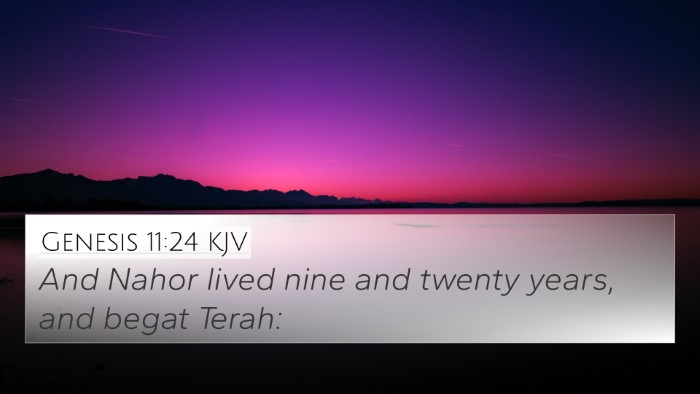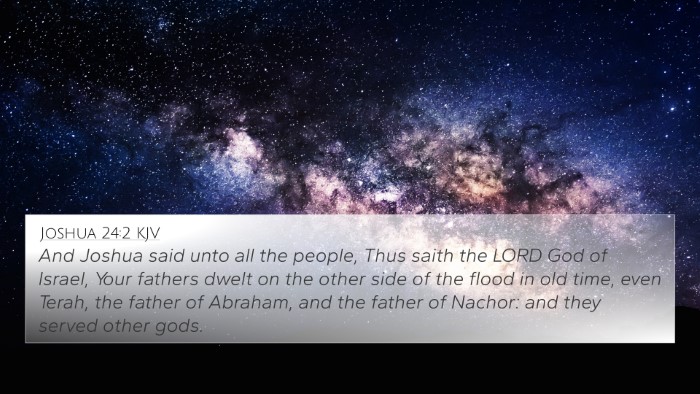Understanding Luke 3:34
Luke 3:34 states: "The son of Jacob, the son of Isaac, the son of Abraham, the son of Terah, the son of Nahor." This verse is significant as it traces the genealogy of Jesus Christ, establishing His lineage from important patriarchs in Judeo-Christian history.
Genealogical Importance
This genealogy serves a dual purpose: to confirm Jesus’ Davidic lineage and to emphasize His connection to the promises made to Abraham and his descendants. Matthew Henry’s commentary highlights that such lineages show the fulfillment of God’s promises through generations.
Albert Barnes notes that including Jacob, Isaac, and Abraham indicates Jesus' legitimate claim to the Messianic lineage, fulfilling prophecies concerning the Messiah's descent.
Adam Clarke elaborates, stating that this passage connects to the broader narrative of the Bible, showcasing how God preserves a faithful remnant through generations, leading to the ultimate fulfillment in Christ.
Theological Significance
In biblical theology, the mention of these patriarchs is vital. The New Testament emphasizes themes of covenant and promise, which are rooted in these ancestral figures. They symbolize faith and God’s unbroken covenant with His people.
Henry’s commentary reminds readers that God’s plan spans generations, reinforcing the notion that Christ is the culmination of biblical history.
Cross-References
Luke 3:34 connects with several important Bible verses, illustrating profound themes of heritage, promise, and covenant:
- Genesis 12:1-3 - God's covenant with Abraham; a promise of blessings through his lineage.
- Matthew 1:1 - The genealogy of Jesus Christ, linking to David and Abraham.
- Romans 9:5 - Declaring that Christ came from the ancestors, affirming His Jewish heritage.
- Hebrews 11:8-12 - The faith of Abraham, emphasizing his role in God’s promises.
- Luke 1:55 - Remembering God's covenant with Abraham and his descendants.
- Galatians 3:29 - All who belong to Christ are Abraham's seed, emphasizing spiritual inheritance.
- Acts 3:25 - Confirming that Jesus is the fulfillment of the promises made to Abraham.
Thematic Connections
Connecting the Old Testament with the New Testament, Luke 3:34 captures a pivotal theme of inter-biblical dialogue. The lineage not only establishes a historical context but also highlights the continuity of God's redemptive plan.
Henry suggests that the mention of these patriarchs serves to remind believers of the faithfulness of God through history, while Barnes illustrates how each listed ancestor plays a role in the unfolding of God's purpose.
Practical Applications
This verse underscores the importance of understanding biblical lineage. Readers are encouraged to use tools for Bible cross-referencing to delve deeper into themes of salvation, covenant, and divine promise. Such studies can provide insights into how the New Testament repeatedly affirms the Old Testament narratives.
For those studying or preparing sermons, understanding the connections between characters and the overarching story of Scripture can significantly enhance the commitment to life's lessons derived from biblical texts.
Conclusion
Luke 3:34 is more than a mere record of lineage; it offers a profound insight into God’s overarching plan of redemption through history. It encourages believers to acknowledge and explore the connections between Bible verses, illustrating the consistent hand of God through generations.
The comprehensive Bible cross-reference materials available are essential tools for anyone looking to explore these narratives further, enabling deeper engagement with the Scriptures and an enriched understanding of faith.
Encouragement for Study
As you explore the connections in Scripture, consider cross-referencing Bible verses that relate to Luke 3:34. This exploration could foster a more nuanced comprehension of biblical themes and an appreciation for the history leading to the advent of Christ.

